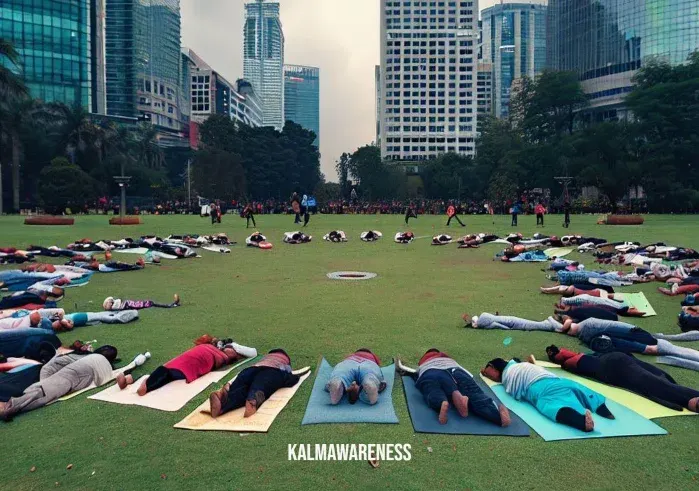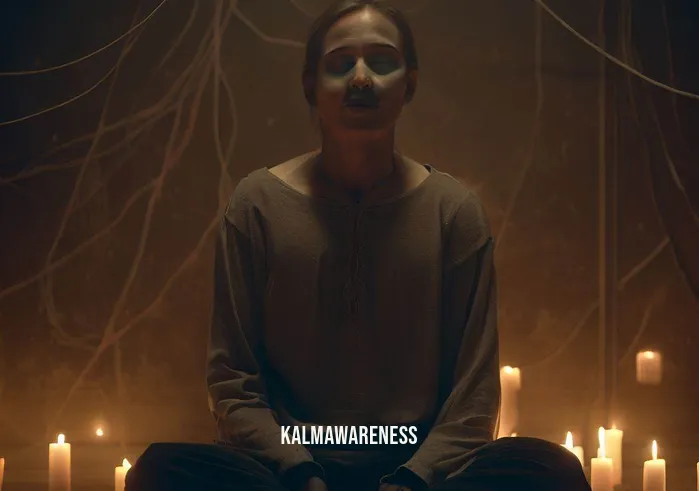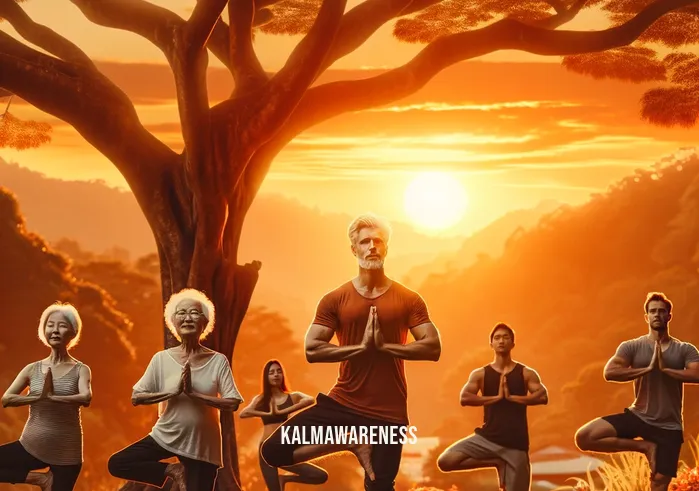The Ultimate Guide to Final Savasana: The Divine Closure in Yoga
Yoga is not merely a set of physical exercises. It’s a journey of the mind, body, and spirit, leading towards a state of complete relaxation and harmony. One crucial part of this journey is the final savasana. While often neglected, this pose symbolizes the ultimate state of relaxation and closure, marking the end of a yoga session.
Savasana, also known as the corpse pose, invites you to simulate your own death and thus cultivate a deep sense of detachment and relaxation. By doing so, it opens the door to a mindful life, away from the hustle and bustle of our everyday routine. In this guide, we’ll explore the profound concept of final savasana and how it can help you rejuvenate and achieve peace.
The Essence of Final Savasana
Savasana, derived from the Sanskrit word ‘Sava’ meaning corpse and ‘asana’ meaning pose, is an essential part of any yoga sequence. Often underestimated, it provides the body and mind with a chance to absorb and integrate the benefits of your practice.
“Final Savasana is not just the act of lying down at the end of a yoga class. It is a meditative practice that involves conscious relaxation, surrender, and an opportunity to absorb the insights gained during the session.” – Jillian Pransky
The Position and Execution
To begin your final savasana, lay down flat on your back on a comfortable yoga mat. Close your eyes and position your legs wide apart, allowing them to relax completely. Your arms should rest alongside your body with the palms facing upwards, signaling openness and acceptance.
The position of lying down is not accidental but serves a specific purpose. The posture invites the practitioner to let go of control, symbolizing the surrender of life. The palms facing upwards is an act of receiving and opens the practitioner to all life’s experiences.
The Significance of Final Savasana
In our fast-paced world, relaxation can feel unfamiliar or even uncomfortable for some. We tend to overlook the importance of rest, which is vital for our overall well-being. However, savasana confronts this issue head-on by reminding us to be still and just ‘be’. This pose guides us to enter into a state of deep rest, facilitating a meditative experience that transcends beyond the physical body.
While lying down in savasana, you’re encouraged to let go of all tensions and anxieties. This practice is a reminder of the temporary nature of our physical existence and a lesson in letting go, creating a spiritual bridge between our inner and outer worlds.
That concludes the first part of our exploration into the world of final savasana. We invite you to continue the journey in the next part, where we delve into the physiological and psychological benefits of this powerful asana.

The Wonders of Final Savasana: Transformative Benefits
We’ve understood what final savasana is and its significance in the holistic journey of Yoga. Now, let’s unfold the layers of benefits that come with practicing this restorative pose. While seemingly simple, savasana delivers profound physiological, psychological, and spiritual benefits, making it a transformative conclusion to your Yoga practice.
Physiological Benefits of Final Savasana
Final Savasana provides an array of physical benefits that are crucial for maintaining a balanced, healthy life. Here are some of the noteworthy physiological advantages:
- Improved Functioning of the Nervous System: Savasana helps calm the mind, facilitating a soothing effect on the nervous system. This relaxation response can help reduce symptoms in conditions tied to an overactive fight-or-flight response such as hypertension, insomnia, anxiety, and panic disorders.
- Muscle Relaxation: After a strenuous yoga practice, your body needs time to recuperate. Savasana allows your muscles, joints, and connective tissues an opportunity to relax and recover, promoting overall physical health.
- Lowered Blood Pressure and Heart Rate: By facilitating deep relaxation, savasana can help to reduce heart rate and blood pressure. It’s a great tool for anyone looking to improve their cardiovascular health.
- Enhanced Digestion: By promoting a state of deep relaxation, savasana can help improve digestive function, beneficial for those with digestive disorders.
For further insights into the physical aspects of relaxation and restoration through yoga, refer to the collection of yoga postures and techniques.
Psychological Benefits of Final Savasana
Beyond the physical, the corpse pose works wonders on our mental well-being. Here are a few of the psychological benefits that it provides:
- Reduced Stress and Anxiety: By promoting a deep state of rest, savasana can significantly decrease levels of stress and anxiety. It guides the practitioner to focus on the present moment, fostering mindfulness.
- Improved Focus and Concentration: The stillness of savasana trains your mind to remain focused, improving your overall attention span and ability to concentrate.
- Promotes Emotional Stability: By calming the mind and creating space for introspection, savasana can bring about emotional balance and resilience. It helps one cope better with emotional stress and upheavals in life.
Practitioners looking for guidance on leveraging yoga for deep psychological and emotional healing can explore the mindful practices outlined in our collections.
Spiritual Impact of Final Savasana
Final savasana also holds a unique place in the spiritual aspect of yoga. It fosters a deep connection with the self and promotes a sense of peace and harmony.
- Facilitates Mind-Body Connection: Savasana bridges the gap between the mind and the body, fostering an intimate understanding of one’s physical existence.
- Encourages Mindfulness: By focusing on your breath and bodily sensations during savasana, you develop an enhanced sense of mindfulness that extends beyond your yoga practice.
- Promotes Inner Peace: The deep state of rest achieved in savasana brings about inner tranquility and serenity, promoting a sense of well-being and contentment.
For individuals keen on exploring the spiritual aspects of yoga, our collection on mindful living provides valuable resources.
| Benefits | Details |
|---|---|
| Physical | Enhanced nervous system functioning, muscle relaxation, improved digestion, lowered blood pressure and heart rate |
| Psychological | Reduced stress and anxiety, improved focus and concentration, emotional stability |
| Spiritual | Improved mind-body connection, enhanced mindfulness, inner peace |
That concludes the second part of our exploration into the realm of final savasana. In the next part, we’ll take a deeper look at the techniques to perfect your savasana and common mistakes to avoid. We invite you to continue the journey into the world of final savasana.

Mastering Final Savasana: Techniques and Common Mistakes
Now that we have explored the realm of final savasana and its manifold benefits, let’s delve into the heart of it – how to properly execute this pose and common pitfalls to avoid. As renowned yogi Pattabhi Jois famously said, “Yoga is an internal practice. The rest is just a circus.” It stands true for final savasana as well. It is about connecting with your inner self, not just replicating an external posture. So, let’s understand how to achieve this inner alignment in final savasana.
Techniques for Perfecting Final Savasana
Here are some tips and techniques to help you achieve a deep state of relaxation in final savasana:
- Positioning: Lie flat on your back with your legs comfortably apart. Your arms should rest along your body, palms facing upwards. The positioning should be comfortable and natural, not forced. Make sure your yoga pose is in harmony with your body’s needs.
- Breathing: Once you have settled into the pose, bring your focus to your breath. Allow your breath to be natural and relaxed. As Thich Nhat Hanh said, “Feelings come and go like clouds in a windy sky. Conscious breathing is my anchor.”
- Relaxation: Mentally scan your body from the tips of your toes to the top of your head, consciously relaxing each muscle as you go along. This process of conscious relaxation facilitates deeper healing and rest, just like how a deep sleep meditation works.
- Mindfulness: Keep your attention on the present moment. If your mind wanders, gently bring it back to your breath. This practice of mindfulness in savasana is a form of meditation, where you are fully present in the moment.
Common Mistakes in Final Savasana
While savasana might seem like a straightforward pose, it’s common to make a few mistakes, especially when you’re a beginner:
- Rushing Into the Pose: Many beginners rush into savasana without properly relaxing their body. Take your time to settle into the pose and find a position that feels comfortable to you.
- Holding Tension: Unconsciously, we often hold tension in our body, even in a restful pose like savasana. Regularly scanning your body for tension and consciously releasing it can improve your savasana practice.
- Getting Distracted: It’s very easy to let your mind wander during savasana. The key is to gently guide your attention back to your breath whenever you notice your mind straying.
For those who are interested in diving deeper into the art of mindfulness and enhancing their meditation practice, our comprehensive guide on how to meditate while lying down can be of great help.
As yoga master B.K.S. Iyengar said, “Yoga teaches us to cure what need not be endured and endure what cannot be cured.” Savasana, in particular, embodies this wisdom by aiding us in healing our body, mind, and spirit and cultivating resilience to face life’s challenges.
Now, you’re equipped with the know-how of perfecting your final savasana. In the next part of this series, we will delve into the historical and cultural significance of savasana. Remember, the journey of yoga is continuous, so let’s keep exploring. Join us in the next chapter, where we traverse the rich tapestry of yoga’s heritage with savasana as our anchor.

The History and Cultural Significance of Final Savasana
Understanding the cultural heritage and historical context of final savasana can deepen our appreciation and enrich our practice. As we delve into its roots, we’re reminded of Rumi’s potent words, “The quieter you become, the more you can hear.” Final savasana, indeed, provides that serene silence for introspection.
History of Final Savasana
The term ‘Savasana’ comes from two Sanskrit words: ‘Sava’, which means ‘corpse’, and ‘Asana’, meaning ‘pose’. This posture, akin to a corpse, symbolizes the ‘final resting position’ in yoga and has a history that extends back over a thousand years. Savasana has been referenced in the ancient yogic texts such as Hatha Yoga Pradipika and Patanjali’s Yoga Sutras, showcasing its enduring presence in yoga traditions.
From a historical perspective, savasana was intended to cultivate detachment and an awareness of the impermanent nature of the physical body. This was not a morbid preoccupation, but rather a liberating understanding that fostered spiritual growth.
Here’s a brief timeline showcasing the evolution of savasana:
| Time Period | Development |
|---|---|
| Ancient Times | Savasana appears in ancient yogic scriptures as a meditative posture for spiritual detachment. |
| Middle Ages | Savasana is practiced in the Hatha Yoga tradition, fostering relaxation and restoration. |
| Modern Era | Savasana is integrated into global yoga routines as the final pose promoting holistic relaxation and integration of the yoga practice. |
Cultural Significance of Final Savasana
In traditional Indian culture, the cycle of life and death is respected as part of the greater cosmic order. The final savasana embodies this acceptance and understanding, allowing us to confront and embrace our mortality in a peaceful and contemplative way. It also serves as a metaphorical death of our old self, paving the way for rebirth and personal transformation.
Practicing savasana aids in cultivating mindfulness, a concept deeply rooted in Buddhist traditions. Thich Nhat Hanh, a renowned Buddhist monk, once said, “The present moment is filled with joy and happiness. If you are attentive, you will see it.” Indeed, the practice of final savasana allows us to be fully present and find contentment within ourselves.
As we move into a fast-paced digital age, the restorative and grounding practice of final savasana becomes ever more relevant. Amid the chaotic hustle, savasana offers a peaceful retreat, a safe haven for our minds.
The final savasana is more than just a physical pose; it is a journey into the innermost layers of our being, an exploration of our own mortality, and a gateway to personal transformation. As the Dalai Lama wisely said, “Calm mind brings inner strength and self-confidence, so that’s very important for good health.” Embrace savasana, and discover your reservoir of inner peace and strength.
In the next chapter, we will delve deeper into how final savasana can be incorporated into your daily routine, and explore how this wonderful practice can bring about profound changes in your life. Remember, every breath, every practice, brings you one step closer to your true self. Join us in the final chapter of this series to discover the practical applications of final savasana in your daily life.
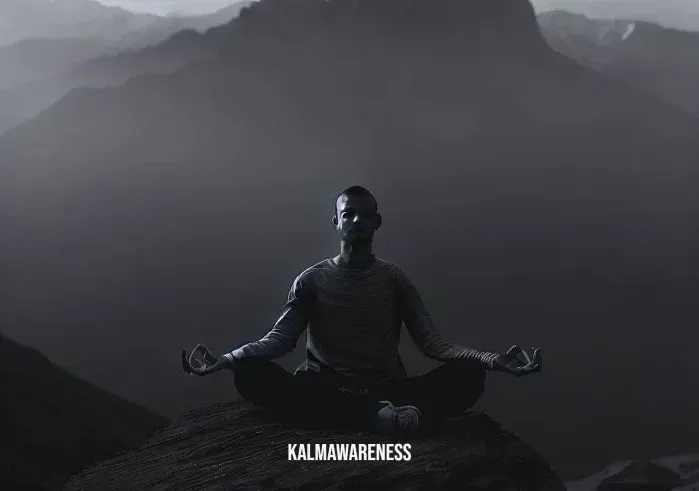
Integrating Final Savasana into Your Daily Life
Final savasana is not just a conclusion to your yoga session; it’s a practice that can be incorporated into your daily life. It serves as an oasis of tranquillity in the midst of chaos, an avenue to connect with your inner self, and an opportunity to imbibe the qualities of mindfulness and relaxation. Let’s explore how we can embrace the essence of final savasana beyond the yoga mat.
Savasana in Daily Activities
Mindful Commuting
In the humdrum of daily commutes, there’s potential for a mini savasana. Whether you are in a bus, a train, or a car, tune into your breath, relax your body, and observe the sounds around you. As you do this, recall the relaxation experienced in final savasana. Although it might not replicate the deep relaxation on the yoga mat, it can definitely serve as a quick stress buster and mindfulness exercise.
Conscious Eating
Another practical way to integrate savasana into daily life is through mindful eating. As you consume your meals, pay attention to the colors, smells, tastes, and textures of your food. Savor each bite and chew slowly, mirroring the stillness and presence experienced in final savasana. Our article on mindful eating provides more insights into this practice.
Savasana before Sleep
One of the most potent ways to incorporate savasana into your daily routine is by practicing it before sleep. As you lay on your bed, position yourself comfortably and allow your body to sink into the mattress. Focus on your breath, consciously relaxing your body from head to toe. This practice can help induce deep sleep and promote overall wellbeing.
Other Avenues for Practicing Savasana
It’s beneficial to find moments throughout the day for mini savasana sessions. You might find such opportunities in waiting rooms, during lunch breaks, or even while enjoying the great outdoors. These short pauses can rejuvenate you and instill the calming effects of final savasana.
Savasana as a Mindset
Beyond these practical applications, it’s essential to embrace final savasana as a mindset—a way of living that encourages mindfulness, serenity, and self-awareness. In this context, the wisdom of Lao Tzu becomes particularly relevant: “When I let go of what I am, I become what I might be.” Let the essence of savasana guide you towards such transformation.
As you integrate final savasana into your daily life, remember it’s not about perfection but practice. It’s about slowing down, becoming present, and fostering self-compassion. It’s about tuning into your inner silence, embracing the moment, and embodying peace.
In conclusion, final savasana is not merely a concluding posture in a yoga sequence. It’s a philosophy, a way of life that extends beyond the yoga mat. By incorporating the essence of final savasana into our everyday activities, we can cultivate mindfulness, foster relaxation, and invite tranquility into our lives.
Continue to the conclusion of this article to explore the scientific benefits of final savasana, the role it plays in mitigating stress, and improving mental health. You will also find a step-by-step guide to performing final savasana correctly and effectively. So, let’s unravel the potent benefits of this humble pose.
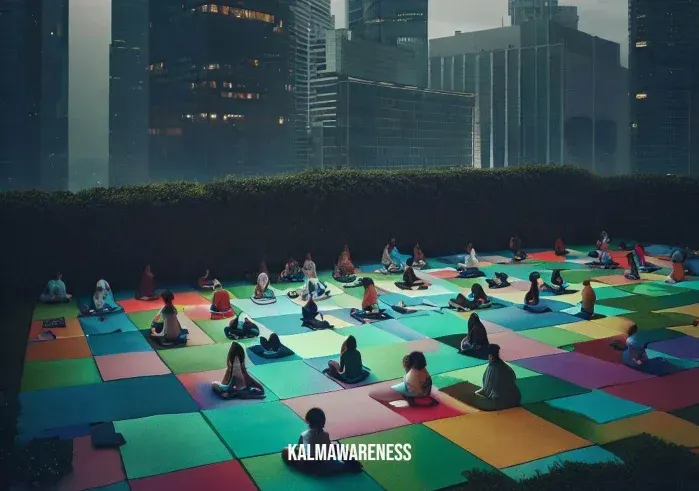
The Scientific Benefits of Final Savasana and How to Practice It Correctly
Final savasana is not just a spiritual journey but also a science-backed practice that promotes physical, mental, and emotional health. Let’s delve deeper into its benefits and how to perform it correctly, ensuring you reap the maximum advantage from this humble pose.
The Science Behind Savasana
Savasana aids in stress relief, improved mental health, and better sleep quality. It allows your body to enter a state of deep relaxation, reducing the production of stress hormones. This effect on the physiological response to stress has been validated by numerous studies.
Furthermore, the practice of savasana supports emotional well-being. It offers a safe space to let go of negative emotions and fosters self-compassion, a vital factor in mental health. Savasana also facilitates better sleep, which is crucial for overall health. By calming the nervous system and promoting a state of relaxation, it prepares the body for a good night’s sleep.
How to Practice Savasana Correctly
- Find a Comfortable Spot: Choose a quiet, comfortable place where you won’t be disturbed. You can use a yoga mat, a soft carpet, or even your bed.
- Position Yourself: Lay down on your back. Allow your legs to fall naturally apart and place your arms alongside your body with palms facing up. Close your eyes.
- Focus on Your Breath: Notice your natural breath rhythm. Don’t try to control or change it, simply observe.
- Relax Your Body: Consciously relax each part of your body, starting from your toes and moving upwards to the crown of your head.
- Stay Present: If your mind starts to wander, gently bring your attention back to your breath.
- Take Your Time: Stay in savasana for at least 5 minutes. However, if you have more time, a 10-20 minute savasana can provide deeper relaxation.
Remember, like any other practice, savasana requires patience and consistency. So, give yourself the time to grow into it. If you’re looking for more detailed instructions or variations of savasana, check out our yoga pose guide.
Conclusion
The final savasana is a gentle yet powerful posture that serves as the concluding chord in the symphony of yoga. However, its benefits extend beyond the yoga mat. By incorporating savasana into your daily routine, you’re not just improving your physical health, but you’re also nurturing your mental and emotional wellbeing.
As the yogic sage Patanjali said, “Yoga is the journey of the self, through the self, to the self.” Savasana is an important part of this journey, offering a path to inner peace, self-awareness, and ultimately, self-transformation.
We hope this article shed some light on the transformative practice of final savasana. Continue exploring the depth of yoga and mindfulness with our articles and resources on KalmAwareness. Immerse yourself in our diverse range of topics, from deep-dive yoga guides, meditation techniques, to a wealth of wellness wisdom. Thank you for accompanying us on this journey towards greater calm and awareness.
